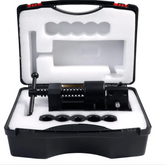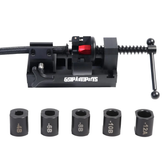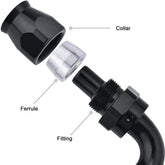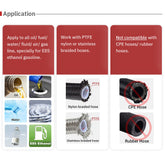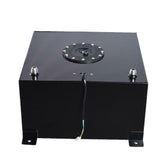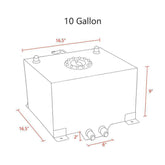When the engine gets very hot, the coolant helps to dissipate that heat to help prevent overheating and engine damage. It also adds frost protection and acts as a lubricant for certain engine parts. If the vehicle's cooling system uses only water, the engine can freeze at low temperatures, causing it to crack and fail.
You can easily do two checks on your coolant or antifreeze and water mixture: that there is enough coolant and that it is still protecting your engine from cold temperatures. If you want to skip right to Checking for Sufficient Coolant, you can scroll down to Check Coolant Level. If you'd like to skip testing the protection level, you can scroll down to Check Freezing.
Helpful Coolant Terms and Facts
Antifreeze is mostly pure ethylene or propylene glycol, which is very toxic, and coolant is the result of antifreeze mixed with water, which you should always do.
Why mix antifreeze and water all the time? Because, contrary to all logic, pure antifreeze freezes at a higher temperature than the usual 50/50 mixture of antifreeze and water. In addition, antifreeze does not absorb heat from the engine like water does.
While conditions vary, the widely recommended 50/50 solution of antifreeze and water will freeze at about -35 degrees Fahrenheit. Pure antifreeze, by contrast, freezes at around 0 to -20 degrees. While the best freeze protection is about 70% antifreeze (below minus 50 degrees), you shouldn't be using anything stronger than 50/50 antifreeze if you can live with it because of the heat transfer issues mentioned earlier Can damage your engine overheating.
Choose the right antifreeze
Antifreeze comes in different colors and you will need to choose the right one for your car. It used to be always green, but now orange is common, and there are other colors as well. If your owner's manual doesn't go into detail, your local auto parts store should be able to help you. You can also check the color when you check your vehicle's coolant level, but if the coolant is too old, the color may be dull and someone may have added the wrong type.
Even what water you use can be a question. It is recommended to use distilled water in the radiator, rather than tap water, as it contains minerals that can damage the cooling system of your car. Few systems can hold more than two gallons of water in total, so a gallon of distilled water (which you can get at almost any store that sells bottled water) should be enough.
Although you don't have to add coolant to the system unless there's a leak, it's usually easiest to add a store-bought 50/50 "premix" if you need to. Otherwise, you could end up with the wrong antifreeze and water ratio since you don't know how much you need to add.
Check the coolant level
There are two places under the hood to check the coolant level: the overflow tank (which may not be available on some older cars) and the radiator itself. If it's not obvious, you can find the overflow tank along the small diameter hose attached to the radiator filler neck (located under the filler cap). Regardless of engine temperature, it is usually possible to visually inspect the translucent overflow tank, as it should be marked with different "cold" and "hot" levels.
Even if the coolant tank is at the correct level (especially if it is low), you may need to check the coolant level in the radiator. For this to work, the radiator needs to be cool, at least to the point where you can put your hand on it, because the cap you remove to check is keeping some pressure in the radiator, in part to help raise the boiling point of the coolant. If the pressure is released suddenly, the coolant will immediately boil and spew very hot coolant like a geyser. If you check the coolant level in the radiator, it should be just below the bottom of the filler neck.
Check the freezing point of the coolant
To check your coolant's freezing point, you'll need some kind of tester. Thankfully, the simple ones usually look like a big dropper with little colored balls in them, but they aren't very expensive. Others may have a larger tank with a pointer in it and a big light bulb on top. While the latter should be more accurate, the former will probably be more accurate.
To test, draw some coolant from the overflow tank or radiator, and read the results. If it doesn't indicate a freezing point that you're happy with, you can boost the coolant by adding direct antifreeze. If you need to remove some coolant to make room for pure antifreeze, most radiators have a drain plug on the bottom of the engine-facing side. Note that you'll need to run the engine for quite some time to mix everything together before testing again.

